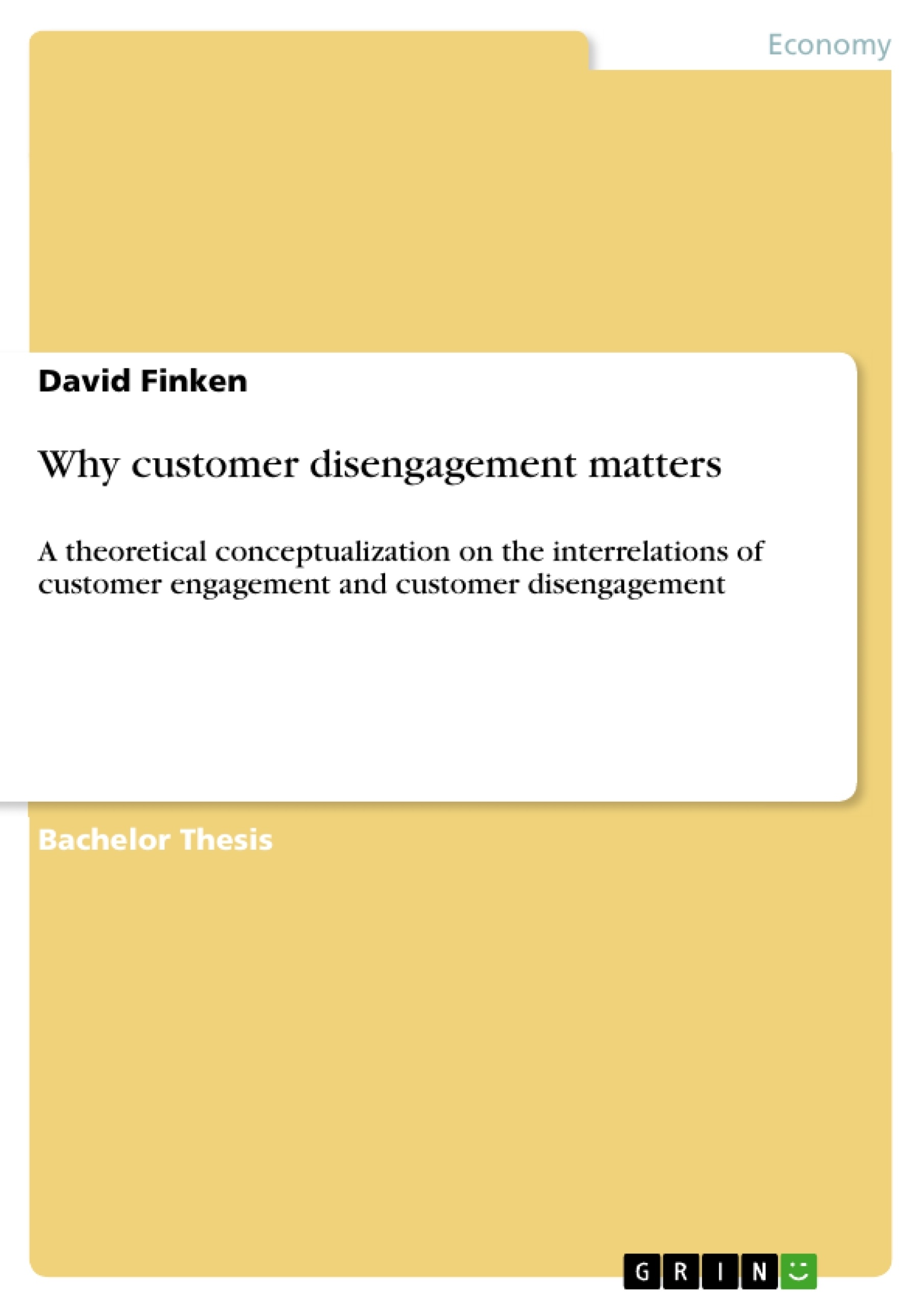Recently, plenty of research was conducted on engagement – more particularly on enhancing Customer Engagement (CE). The flip side of CE, namely Customer Disengagement (CDE), seems to be uncharted. Thus, this thesis elaborates a working definition on CDE.
This includes the interrelation of CE and CDE. According to this paper, CDE is described as a psychological process that can cause the state of complete detachment from a Brand or Service (B/S).
CDE could have behavioural outcomes in terms of Negative Customer Engagement (NCE). Additionally, it interrelates with former CE levels and varies across contexts. CDE is supposed to be a promising research field.
Inhaltsverzeichnis (Table of Contents)
- INTRODUCTION
- CHALLENGES AND RESEARCH QUESTIONS
- STRUCTURE OF THE THESIS
- APPROACHES TO CUSTOMER ENGAGEMENT AND CUSTOMER DISENGAGEMENT
- DEFINITIONS AND DISTINCTIONS FROM SIMILAR TERMS
- The term Engagement in academic disciplines.
- Customer Engagement in marketing or service literature.
- Distinctions from similar relationship constructs
- Different conceptualisations on Customer Engagement.
- WORKING DEFINITION OF CUSTOMER DISENGAGEMENT.
- DEVELOPING THE CONSTRUCT OF CUSTOMER DISENGAGEMENT.
- RELEVANCE OF CUSTOMER DISENGAGEMENT.
- CURRENT APPROACHES ON RELATIONSHIP ENDING
- EXAMINATION AND EXPLANATION OF THE PROCESSUAL CHARACTER OF CUSTOMER DISENGAGEMENT.
- DIMENSIONS OF CUSTOMER DISENGAGEMENT.
- COHERENCE BETWEEN CUSTOMER ENGAGEMENT AND CUSTOMER DISENGAGEMENT
- INTERRELATIONS BETWEEN CUSTOMER ENGAGEMENT AND CUSTOMER DISENGAGEMENT
- CRITICAL DISCUSSION.
- CONCLUSION AND IMPLICATIONS
Zielsetzung und Themenschwerpunkte (Objectives and Key Themes)
This thesis aims to develop a working definition of Customer Disengagement (CDE) and explore its interrelations with Customer Engagement (CE). It investigates the psychological processes that lead to complete detachment from a Brand or Service (B/S) and the potential behavioral outcomes, including Negative Customer Engagement (NCE).
- Defining and conceptualizing Customer Disengagement
- Examining the interrelation of CE and CDE
- Analyzing the processual character of Customer Disengagement
- Exploring the dimensions of Customer Disengagement
- Investigating the potential impact of CDE on customer behavior
Zusammenfassung der Kapitel (Chapter Summaries)
The introduction presents the research challenges and outlines the thesis structure. Chapter 2 explores definitions and distinctions of Customer Engagement and Customer Disengagement, culminating in a working definition for CDE. Chapter 3 delves into the relevance of CDE, examines current approaches to relationship ending, and explains the processual character of CDE. Chapter 4 analyzes the coherence between CE and CDE, discussing their interrelations and critical considerations. Finally, the conclusion summarizes the findings and offers implications for further research.
Schlüsselwörter (Keywords)
Customer Disengagement, Customer Engagement, Brand or Service, Negative Customer Engagement, Detachment, Psychological Process, Relationship Ending, Service-Dominant Logic.
- Arbeit zitieren
- David Finken (Autor:in), 2016, Why customer disengagement matters, München, GRIN Verlag, https://www.grin.com/document/340369



